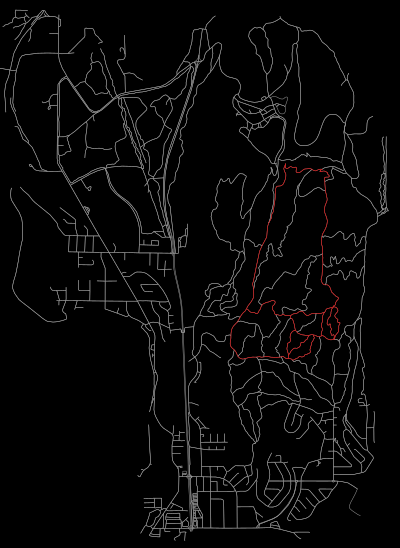Mountain Bike Map T-Shirt

I decided to make this shirt after playing with an intriguing piece of software
called
OSMnx.
OSMnx is a Python module that retrieves road and trail networks from
Open Street Map,
and can make high quality images of those networks.
I'm no graphic designer but I love t-shirts and I sometimes find myself thinking "The Ramones are great, and I like wearing their logo on my shirt, but what else am I enthusiastic about that can be easily put on a t-shirt?". I absolutely love the trails in Squamish, particularly Entrails and the trails that branch off of it. Many of Squamish's mountain bike trails are mapped in Open Street Map so with OSMnx it was easy and fun to put bike trails in a form that can be screen-printed onto a t-shirt.
To generate an image of the Squamish road and trial network I entered the following lines into a Python interactive interpreter:
import osmnx as ox
g = ox.graph_from_place('Squamish, Canada', network_type='bike', simplify=False)
gproj = ox.project_graph(g)
gsimp = ox.simplify_graph(gproj)
ox.plot_graph(gsimp, fig_height=30, node_size=0, edge_linewidth=0.5, save=True, file_format='svg', filename='squamishbike')
In my case this created a file called 'squamishbike.svg' in the 'images' folder in my home folder. The location of the output will vary depending on your operating system.
I used Inkscape (an excellent free and open source vector graphics editor) to crop the image and highlight a few permutations of my favorite Entrails loop; and I sent the resulting image off to a t-shirt printing company.
Thanks to all of the trail builders and maintainers, and code builders and maintainers, and Open Street Map contributors who made this project possible!